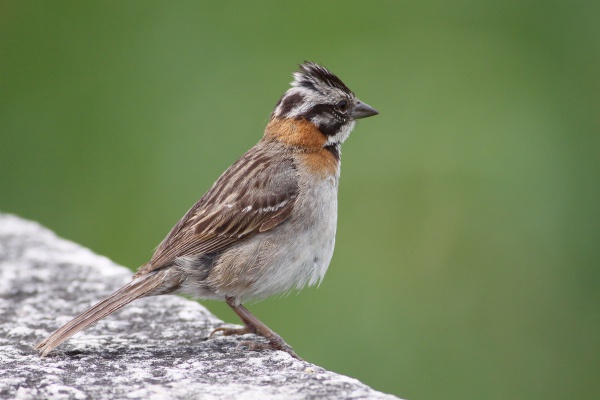Facts About Rufous-collared sparrow
The Rufous-collared Sparrow, also known as the Andean Sparrow, is a delightful bird found from Mexico to Tierra del Fuego, and even on the island of Hispaniola in the Caribbean. This bird is renowned for its extensive range of vocalizations, making it a favorite subject for researchers.
What does it look like? The Rufous-collared Sparrow features a distinctive grey head with black stripes, a rufous (reddish-brown) collar, and buff-brown upper parts streaked with black. There are several subspecies, each varying slightly in size and color.
One of the most remarkable things about this bird is its adaptability. It thrives in various open or semi-open habitats, including urban areas. Its diet is diverse, consisting of seeds, insects, and spiders, and it typically forages in pairs or small groups. Breeding timing is influenced by food availability and rainfall. The nests are situated either on the ground or in low vegetation, and the female lays pale greenish-blue eggs with reddish-brown blotches. These eggs are incubated for about 12-14 days.
The Rufous-collared Sparrow also exhibits intriguing physiological traits. It relies on its kidneys for osmoregulation and ion regulation, enabling it to manage a wide range of salt intake. Additionally, it has strategies to cope with temperature changes, adjusting its metabolic rate and water loss to maintain comfort in different environments.
One of the most fascinating aspects of this bird is its vocalizations. There is significant geographical variation in their calls and songs. The male's song typically includes slurred whistles and trills, but the pitch and duration can vary. Different populations have their own "dialects" and even habitat differences can influence song patterns.

 Argentina
Argentina